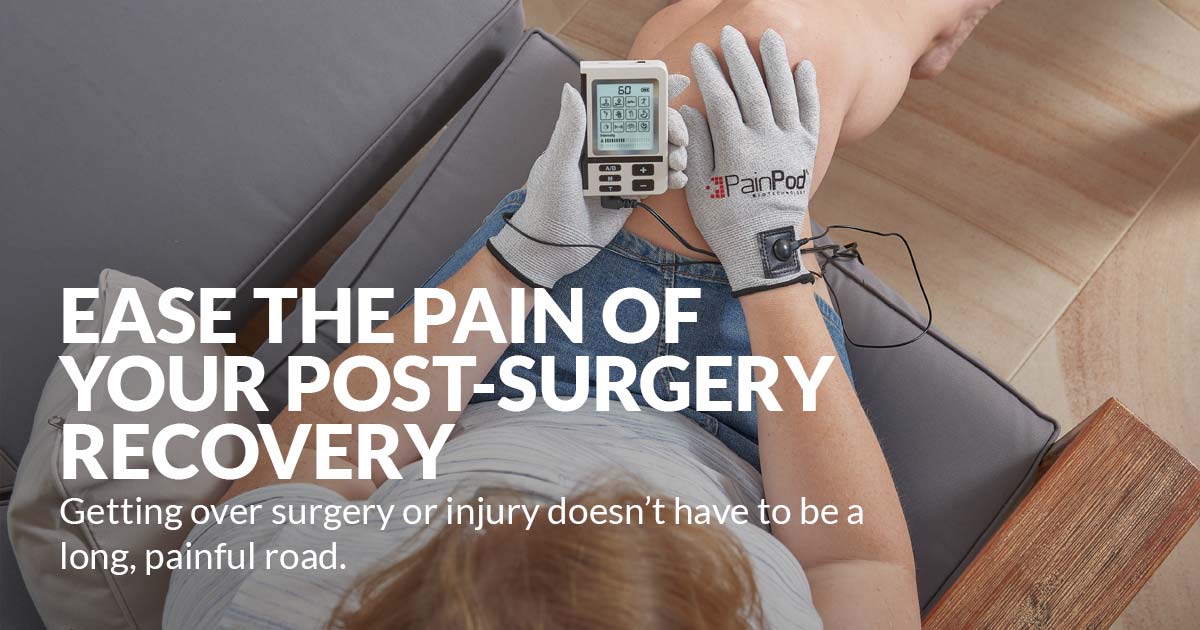
They don’t ever have to struggle with recovering after surgery, injury or other major trauma. But for the rest of us, we’re going to be staring at a lengthy, and often uncomfortable recovery period at some point in our lives… and maybe even several points.
One of the hardest parts of recovery is getting your body back to its former shape so you can live normally again. The discomfort - or even pain - that often follows surgery is a major obstacle on the road to recovery.
That’s where PainPod comes in.
The TENS and EMS technology embedded in all PainPod devices can make a big difference in relief and recovery from post-surgery pain1.
TENS or Transcutaneous Electrical Nerve Stimulation is a very effective analgesic (pain reliever). It works by sending gentle electrical pulses through the affected body area, blocking the pain signals that would otherwise be sent to the brain2. While particular opioid-like drugs are often used for pain relief, they are often accompanied by side effects. The TENS technology embedded in PainPod is a drug-free method of relieving pain. As an added benefit, it also encourages your body to produce endorphins3, 4, hormones that work to relieve pain naturally.
What’s more, it’s proven to work. One study5 showed TENS reduced post-surgery pain in 94% of the people involved.
TENS has been used for pain relief in a wide variety of surgical procedures, including knee and shoulder6, 7, thoracic8, gynecological9 and dental10 procedures. In some cases, has been reported to speed up the recovery process.9
As well as pain, recovery from surgery often involves extensive rehabilitation. PainPod is in your corner for this also!
EMS, or Electrical Muscle Stimulation, is often used (sometimes in partnership with TENS) to augment the post-surgery rehabilitation process. In contrast to TENS which stimulates the nerves, EMS directly stimulates the muscle, causing it to contract. It is primarily used for “Muscle Education”, a technique to retrain muscles and joints that are having trouble contracting and moving after a surgical procedure and/or post-surgery immobilization11. Actively trying to contract the muscle or move the joint during EMS can sometimes get the brain to re-learn how to do this itself. Finally, EMS is also effective in reducing muscle cramps and spasms12 as well as muscle atrophy13, factors that often occur post-surgery and can slow the rehabilitation process.
In Australia and other countries, thousands use these TENS and EMS techniques to ease post-surgery pain and enhance the speed and effectiveness of their recovery. With the PainPod, they’ve got a device that’s light-weight, easy to use and ready to help them get stronger, faster.
“Jumpstart” your body’s recovery process
Use PainPod as often as you need to
Light-weight and portable, so take it wherever you go
The pinnacle in portable physical therapy devices.
Treat yourself fingers to toes - relax restore and rejuvinate!